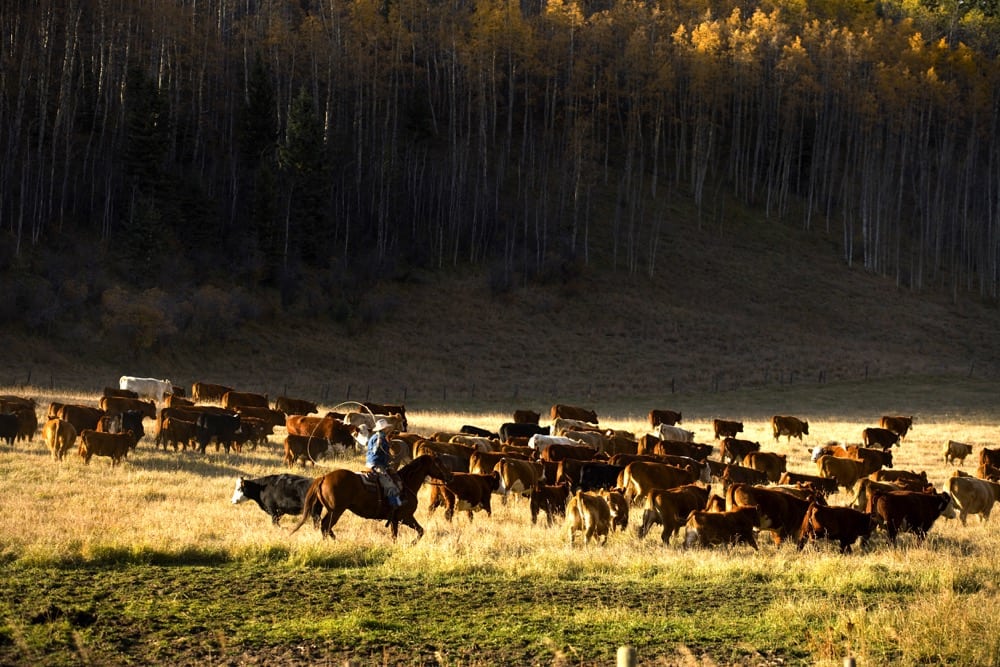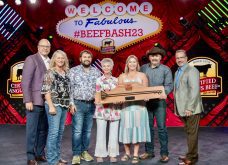Four years after McDonald’s chose Canada to launch its landmark sustainable beef initiative, some producers and feedlots are happily cashing cheques for participating in that effort.
And while the amounts so far have been fairly small, it’s a big plus for producers, say participants.
“We started on that journey because we thought it was important for the industry and it was going to meet what the consumers were asking for,” said Shannon Argent, a producer from Cremona who is participating in the Canadian Beef Sustainability Acceleration pilot.
Read Also

Body condition, nutrition and vaccination for brood cows
One of the remarkable events of the past century related to ranching has been the genetic evolution of brood cows….
“It just morphed into what the Canadian Roundtable for Sustainable Beef wanted and what some of the retailers are looking for, and we’re just happy to be part of it.”
The year-long pilot, launched in October, was created to show that meat from cattle raised and processed according to the sustainability standards (called indicators) could successfully be tracked and segregated as it moved through the supply chain.
But it also had a loftier goal: Encourage restaurant and grocery chains to market ‘verified sustainable’ Canadian beef while showing producers there’s money to be made by supplying cattle for the program.
It’s been successful on both fronts, said Karleen Clark, who operates KCL Cattle Company, a 23,000-head feedlot near Coaldale, with her husband, parents, sister, and brother-in-law.

“The beef sustainability acceleration pilot brings attention to people who might not see the need to verify, like these small operations that are not concerned about public perception,” said Clark. “They’re doing things right, but they don’t take the time to get verified or audited.
“When you have a financial incentive, and when we go to make our purchase decisions, the source can advertise that they are verified beef production and we can source accordingly because we know the payout is coming.”
And it looks like that will continue.
Earlier this month, McDonald’s Canada — the country’s largest buyer of beef — announced it is going to promote its burgers as made from verified sustainable beef.
“This is a big step in our beef journey — not just for McDonald’s Canada and the Canadian beef industry, but around the world,” McDonald’s Canada president and CEO John E. Betts said in a news release.
“This partnership, combined with McDonald’s scale, is creating change and encouraging responsible beef production for years to come that will benefit all Canadians.”
The company’s initial goal is to have at least 30 per cent of the beef it buys produced under the 60-plus indicators set out by the Canadian Roundtable for Sustainable Beef (CRSB).
But given McDonald’s size, that 30 per cent adds up to a lot of beef.
“Over the next 12 months, more than 20 million Angus burgers will be sourced according to the CRSB standards,” McDonald’s said in the release.
“Sustainability is good business,” added CRSB chair Cherie Copithorne-Barnes, who ranches at Jumping Pound. “Consumers are increasingly inquisitive about the food they’re eating and want to know it was produced in a socially responsible, economically viable and environmentally sound manner.”
Argent agrees.
She ranches with her husband and parents, and their operation has been in the Verified Beef Production program for seven years. (That program has morphed into VBP+ to include the necessary certification element.)
“We’re just happy to be part of it,” said Argent, a former provincial co-ordinator for the program. “VBP+ is getting accepted as sustainable beef and that makes it a lot better for producers.”
The payment has also gone up, she added.
“It’s increased from $10 a head from the first quarter of the pilot to $20 a head in the second quarter,” she said.
At Clark’s feedlot, the first cheque was only $50, although that rose to $1,629 for the second quarter thanks to the higher premium and more verified sustainable cattle going through the feedlot.
But being in the VBP+ program has other rewards, she said.
“That’s a really good program to get behind because it verifies the good things that we are doing in the industry, sets standards, and shows that we are part of those standards,” said Clark. “We are meeting them and we can share with consumers in the world that we’re doing things properly.”
The pilot has gone extremely well and proven it is possible to source beef that is fully verified and tracked through the supply chain, said Virgil Lowe, business development manager with VBP+, which helps administer the pilot.
“There are plans to continue the project, but they’re not realized or released yet,” said Lowe. “What we’re trying to do is work out the details of how to continue on with the program. We’re not definitely going to go for just one year. It’s just that how hasn’t been determined.”
The pilot has generated a lot of interest from buyers of beef, he said.
“We’ve learned a lot about how to implement verified sustainable beef value chains in the market and so we’re able to take those markets into the future development of projects or programs to be able to deliver that product to end-users,” he said.
“It’s shown that there is end-user demand with dollars for the product. This has driven uptake from producers and feedlot operators, which is excellent.”
The ultimate goal is to show consumers that Canadian beef is being produced according to meaningful standards, he said.
“I think that it’s really important that we’re showing that commercial beef production is good and sustainable and we are doing well at it, which is the most critical, in my opinion.”
The indicators cover five areas, including animal welfare and health along with environmental stewardship. A full list of those standards, as well as the certification and audit requirements, can be found at crsbcertifiedsustainablebeef.ca. Cattle must also be registered in the Beef InfoXchange System, which tracks their movement.
– With staff files
This article was originally published on the Alberta Farmer Express.

















